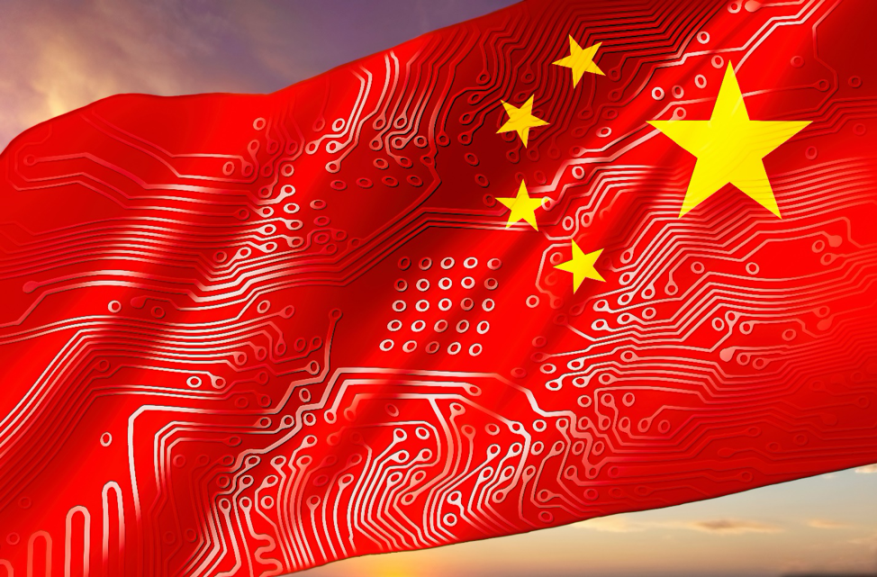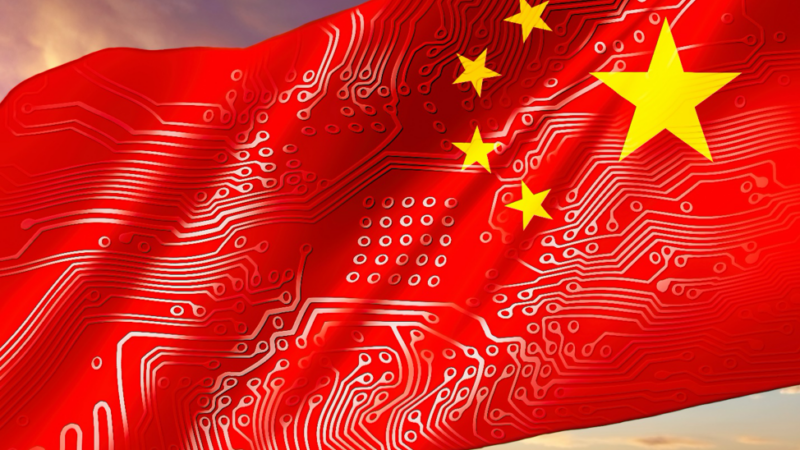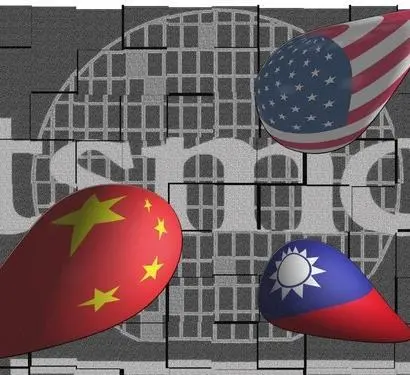Abstract: Artificial intelligence is one of the research areas through which the Chinese People’s Liberation Army strives for parity with the United States. Often, a head-to-head race between the two countries is predicted. However, this can only be determined if inadequate indicators such as R&D spending or patent applications are used for comparison. If we look systematically at the respective national innovation systems in the field of AI, the situation is entirely different.
Bottom-line-up-front: The key comparative figures in global technology- and innovation policy are inadequate at best. Since global competition in these policy areas has long been a reality, such indicators are naturally also adjusted to one’s own advantage. This is particularly true for China.
Problem statement: How to assess the importance of and European dependence on Chinese analysis capacity in the field of artificial intelligence?
So what?: It’s time for European governments to implement serious Strategic Foresight. It was important with regards to Covid-19 and it still is crucial to assess risks deriving from the People’s Republic of China.

Source: shutterstock.com/gopixa
War under high-technology conditions
For more than twenty years, in China concepts have been developed, under the keyword – shashoujian (“Assassin’s Mace”) or wangpai (Trump Card), aiming for strategic deterrence and engaging in asymmetric warfare. The term “Assassin’s Mace” first appeared in China in the mid-1990s, referring to the strategic culture of imperial China.[1] It was scientists associated with the Academy for Military Sciences, such as Pi Mingyong or Liang Bi, who pointed out that by utilizing specific technologies, integrated into new strategies, relatively backward states can develop a military potential that can stand up to the USA. This could be achieved without entering the arms race, feared by Chinese experts, in which the Soviet Union had failed only shortly before.
The emphasis here was on the “information revolution”, one of the most important predictions of the future, made by Western futurologists, such as, most notably, Alvin Toffler, who first visited Beijing in the mid-1980s.[2] Gradually, the People’s Liberation Army (PLA) generals shifted their basic strategic orientation from a “people’s war under modern conditions” to a “local, limited war under high-technology conditions”. In doing so, they complied with a demand made by President Jiang Zemin in 1993. However, it was not until the 16th Party Congress of the Chinese Communist Party (CCP) in 2002, that Jiang first spoke of the PLA being oriented toward the “military transformations” that were also being intensively discussed in the Western armed forces at the time.[3]
Gradually, the People’s Liberation Army (PLA) generals shifted their basic strategic orientation from a “people’s war under modern conditions” to a “local, limited war under high-technology conditions”.
The two technologies currently being pushed most intensively in China from this point of view are artificial intelligence (AI) as an enabling technology and the development of cryptocurrencies.[4] China hopes to undermine the dominance of the US dollar in international payments and for developing a “Cyber Community of Common Destiny”.[5]
AI in China
In June 2017, the Ministry of Science and Technology released the “New Generation Artificial Development Plan, AIDP”, with the immodest goal of developing China into the world’s leading nation in “artificial intelligence (AI)” (ren gong zhi neng) by 2030. The AIDP a three-stage development for China’s AI sector: The first stage, completed in 2020, the goal was to achieve parity with the most “advanced nations“ in the field of AI. In the second, competitiveness in different AI areas should be expanded, and new technological standards should be set: By 2025, China should achieve at least one key breakthrough in AI basic research and take the global lead in key application areas. The AIDP does not specifically address the question which areas of AI should be particularly promoted. Suppose one takes the definition of previous plans such as the “Internet plus” and the “Three-year development plan for AI”, both published in 2016, by the National Development and Reform Commission (NDRC), the Ministry of Science and Technology (MoST) and the MIIT (Ministry of Industry and Information Technology) into consideration. In that case, this is basic research in the area of deep learning, software, and hardware components such as chips and sensors and applied research in the area of cybersecurity. In the third stage, by 2030, China is expected to have matured into the global innovation center for AI.[6]
By 2025, China should achieve at least one key breakthrough in AI basic research and take the global lead in key application areas.
In November 2018, the AIDP goals were further substantiated with the Zhiyuan Action Plan. The Zhiyuan Plan prompted the establishment of the BAAI (Beijing Academy for Artificial Intelligence) and the New-Generation AI Innovation & Development Pilot Zone (“Pilot Zone”), as well as the Beijing Zhiyuan-Megvii Intelligent Model Design and Image Perception Joint Lab (The “Joint Lab”). The “Pilot Zone” is China’s first AI-focused innovation cluster, specifically in Beijing, followed by Shanghai in May 2019. In September 2020, plans were revealed to introduce additional 18 “Pilot Zones” by 2023.[7]
China’s AI ecosystem
To make artificial intelligence innovation systems with a focus on machine learning (ML) comparable, four indicators must be considered:
- Data availability: ML needs vast amounts of data for algorithms to “learn”. In this regard, China enjoys a competitive advantage. Debates about data security and privacy do not occur, and unrestricted access is possible. The international expansion of the “Digital Silk Road” and the advancement of beiDou, a satellite navigation system, also provide data access. However, this competitive advantage is dwindling as, on the one hand, the relevance of data quantity is decreasing. Meanwhile, on the other hand, the importance of “synthetic data” for training purposes for machine learning is increasing strongly.
- The AI expertise: For the development of AI, particular expertise is required, which differs from the contemporary number of “talents”. Currently, fewer than 5 percent of global AI experts are based in China. Moreover, the country’s dominant position in some commercial application areas remains rooted in access to international markets, technology and research.
- The availability of AI open-source software platforms. In general, the availability of AI open-source software platforms is considered a prerequisite for innovation in various application areas. Immediately after the release of the AIDP, the Ministry of Science and Technology, under the keyword of developing a “national team” (guojiadui), originally commissioned four companies to develop platforms with different focuses: Baidu[8], Alibaba[9], Tencent, and iFlytek. A fifth, SenseTime, was added in 2018. In August 2019, the initiative was expanded to 15 companies. Although progress has been made in some areas, the main developments are still based on Google and Microsoft. More than two-thirds of them are still based in the US.
- Semiconductor production: The real Achilles’ heel is the lack of production and design capacity for semiconductor components suitable for AI. US companies hold global monopolies in the development of these particular high-value chips. Even with the start-up of chip design companies, such as HiSilicon by Huawei or Pingtouge by Alibaba, the problem remains that all AI-ready chips must be manufactured at TSMC, in Taiwan. According to current research, China’s largest semiconductor producer, SMIC (Semiconductor Manufacturing International China), is about two generations (i.e., three years) behind the state of leading production technology. Despite massive government subsidies of up to 30 percent of annual expenditures, it would take years for China to catch up with world market leader TSMC, according to various expert estimates. If we look at these four indicators, a much more realistic picture emerges, and it becomes clear that there is no question of China’s much-cited lead in the AI sector.
China is launching a catch-up that will focus primarily on the design and production of high-value semiconductor devices.[10] Manufacturing has been considered a “priority” since the 8th FYP of 1991, and the 14th FYP(2021-2025) again puts this goal central. Especially in the design area for AI chips and the EUV technology (Extreme Ultraviolet Lithography) required for this, China has a backlog that is almost impossible to catch up with.[11] Therefore, the acquisition of such technologies abroad will be the focus, and the agreement announced in March 2021 between the Dutch company ASML and the Chinese semiconductor manufacturer SMIC for the purchase of such production equipment, weighs particularly heavily.[12] As recently as 2017, the Trump administration had put pressure on the Dutch government to prevent such transactions. This also poses a problem in terms of Europe’s “digital sovereignty.” Chip design technology is one of the few areas in which European companies are global leaders.
Especially in the design area for AI chips and the EUV technology (Extreme Ultraviolet Lithography) required for this, China has a backlog that is almost impossible to catch up with.
Nevertheless, catching up under the conditions of “strategic competition” presents a formidable challenge for China.
Bernhard Seyringer; Author and Analyst focusing on Chinese foreign- and technology policy. The views contained in this article are the author’s alone.
[1] Liu Jinghua, “Ershi yi shiji ershi sanshi niandai Zhongguo jueqi ji waijiao zhanlue xueze,” Zhanlue yu guanli (Strategy and Management), 4/3 (1994): 119.
[2] Alvin Toffler and Zhao Ziyang, “China’s New Technological Revolution 1979-1991,” in The Futurists of Beijing, ed. J. Gerwitz, The Journal of Asian Studies, Vol. 78/1 (2019): 115-140.
[3] Jiang Zemin, “Build a Well-off Society in an All-Round Way and Create a New Situation in Building Socialism with Chinese Characteristics,” Report to the 16th National Congress of the Communist Party of China, 8. November 2002.
[4] China’s 2017 National AI Development Plan identifies AI as a “historic opportunity” for national security leapfrog technologies: Specifically, the plan says that China should “firmly seize the major historic opportunity for the development of AI . . . and support national security, promoting the overall elevation of the nation’s competitiveness and leapfrog development.”
[5]“Xieshou gongjian wangluo kongjian mingyun gongtongti [Working Together to Build a Cyber Community of Common Destiny],” Xinhua News, published November 16, 2016, http://news.xinhuanet.com/zgjx/2016-11/17/c_135836056.htm.
[6] The China State Council’s AIDP is available in English at Graham Webster, Rogier Creemers, Paul Triolo, and Elsa Kania (translators), “Full Translation: China’s ‘New Generation Artificial Intelligence Development Plan,’” New America, August 1, 2017. https://www.newamerica.org/cybersecurity-initiative/digichina/blog/full-translation-chinas-new- generation-artificial-intelligence-development-plan-2017/, accessed March 19, 2021.
[7] http://www.china.org.cn/china/2019-02/22/content_74493744.htm, accessed March 19, 2021.
[8] Andy Patrizio, “Baidu Takes a Major Leap as an AI Player with New Chip, Intel Alliance,” Network World, July 11, 2018, https://www.networkworld.com/article/3289387/data-center/baidu-takes-a-major-leap-as-an-ai-player-with-new-chip-intel-alliance.html.
[9] Cate Cadell and Adam Jourdan, “China’s Alibaba Doubles Down on Chips amid Cloud Computing Push,” Reuters, September 19, 2018, https://uk.reuters.com/article/us-china- alibaba/chinas-alibaba-doubles-down-on-chips-amid-cloud-computing-push-idUKKCN1LZ0PR, accessed March 19, 2021.
[10] Cate Cadell, “Chips Down: China Aims to Boost Semiconductors as Trade War Looms,” Reuters, April 20, 2018, https://www.reuters.com/article/us-usa-trade-china-chips/chips-down-china-aims-to-boost-semiconductors-as-trade-war-looms-idUSKBN1HR1DF, accessed March 19, 2021.
[11] Edward White, “China’s Ability to Make Computer Chips Still ‘Years Behind’ Industry Leaders,” Financial Times, January 22, 2019, https://www.ft.com/content/a002a9e4-1a42-11e9- b93e-f4351a53f1c3, accessed March 19, 2021.
[12] Stephen Nellis, “ASML extends sales deal with Chinese chipmaker SMIC to end of 2021,” Reuters, March 3, 2021 https://www.reuters.com/article/us-asml-holding-smic-idUSKBN2AV1S6, accessed March 19, 2021.






